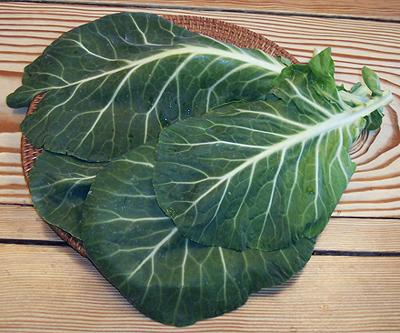 [Couve (Brazil), Couve-galega (Portugal), Berza (Spanish);
Brassica oleracea group Acephala]
[Couve (Brazil), Couve-galega (Portugal), Berza (Spanish);
Brassica oleracea group Acephala]
This cabbage, closely related to Kale, may have originated in Western Asia, but was well known and cultivated by the ancient Greeks and Romans. Either the Romans or the Celts carried it as far north as Scotland. Scots took it to the American South where it was adopted by slaves because it was easy to grow and could be used similarly to African greens they were accustomed to cooking.
Confusion: "Collard Greens" are much used in Africa today, but they are not the Collard Greens of North America. East African agricultural articles always call them "Kales". The North American variety is very tough and needs long cooking time (they have to be tough to grow in Scotland). Knowledgeable African recipes always call for using Kale in place of African "Collard Greens" (Sukuma wiki in Swahili). For details see Kale.
Collards are also a popular side dish for fish and meat in Portugal and Brazil. These are from the Mediterranean region, so again, not generally as tough as our Scottish variety - obvious from cooking times in recipes. Use Kale instead of American Collards
Collards are rather indigestible raw, but are very nutritious when cooked until tender. Along with the related Kale, they are rated to have the most nutrition per calorie of all vegetables. Because they are tough, they are often shredded fine for cooking. The photo specimens were up to 15 inches long.
For more on Cabbage Greens
When Collards are chopped or chewed, enzymes produce Sulforaphane which is considered a potent anti-cancer substance, and also helps with diabetes. It is antimicrobial, and also thought to help inhibit heart inflammation.
Persons taking warfarin or other anti-coagulants are cautioned against eating Collards due to its high vitamin K content.
cb_collaz 170811 - www.clovegarden.com
©Andrew Grygus - agryg@clovegarden.com - All photos on this
page not otherwise attributed are © cg1.
Linking to and non-commercial use of this page permitted.